Rural Firefighters Delivering Agricultural Safety and Health (RF-DASH)
- Need: To reduce injuries in agricultural communities and improve emergency responders' preparedness when called to farms and ranches.
- Intervention: RF-DASH equips rural fire/EMS personnel and others with agricultural health and safety knowledge and tools to pre-plan for agricultural emergencies as well as assess and then mitigate agricultural hazards.
- Results: Over 250 firefighters and EMTs have received training to become RF-DASH trainers.
Description
Rural fire and emergency medical services (EMS) face significant challenges when responding to calls on farms and ranches. Agricultural operations often cover large areas and have hazards that may be unfamiliar to the average first responder. Rural Firefighters Delivering Agricultural Safety and Health (RF-DASH) provides training and tools to fire/EMS personnel to improve emergency response capacities as well as promote risk mitigation. The program is aligned with the National Fire Protection Association's standard 1300, related to community risk assessment and mitigation.
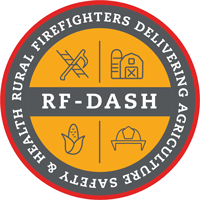
To date, fire departments, insurance companies, extension services, and community/technical colleges have participated in RF-DASH. Individual first responders can also become RF-DASH trainers and provide education in their own fire or emergency medical services (EMS) departments.
RF-DASH is primarily funded by the Upper Midwest Agricultural Safety and Health Center (UMASH) through the Centers for Disease Control and Prevention's National Institute for Occupational Safety and Health (NIOSH). The program has also received support from the Institute for Clinical and Translational Research at the University of Wisconsin-Madison and from the CHS Foundation, which allowed RF-DASH to hire a full-time trainer.
Services offered
There are four primary elements to the RF-DASH program: trainings, tools, resources, and outreach materials.
Trainings
RF-DASH's train-the-trainer approach covers farm safety, the farming environment, and agricultural emergency prevention strategies. Trainings are a mixture of classroom-based lectures and hands-on training at a local agricultural operation. The classroom portion of the training course consists of five modules:
- Introduction to Agricultural Emergencies introduces participants to the basic characteristics of agriculture in their region and common farm emergencies, emphasizing that agricultural emergencies like tractor rollovers or grain bin entrapment are “low frequency, high risk” and often expose first responders to hazards.
- Pre-Planning and Mapping Farms instructs participants in how to pre-plan and map agricultural operations to improve and expedite emergency responses using the Farm MAPPER tool (described below).
- Farm Hazard Analysis teaches participants how to identify and evaluate hazards using the SaferFarm tool (described below), prioritizing those hazards most in need of mitigation.
- Farm First Aid trains participants in farm first aid with the goal of those participants then teaching it to farmers, farm families, and farm employees to administer while waiting for fire/EMS to arrive.
- Approaching the Farm Community provides firefighter and EMS participants with strategies for building strong relationships with farmers and the broader agricultural community.
Following the classroom portion of the course (approximately 4-5 hours), participants tour a local farm to receive hands-on training and practice using Farm MAPPER and SaferFarm (approximately 3-4 hours) to pre-plan and evaluate hazards.
In fall 2025, RF-DASH launched an online version of the training. Designed in collaboration with e-learning specialists, the online RF-DASH course offers interactive versions of all five core modules as well as a virtual farm walk-through that uses 360-degree imagery technology.
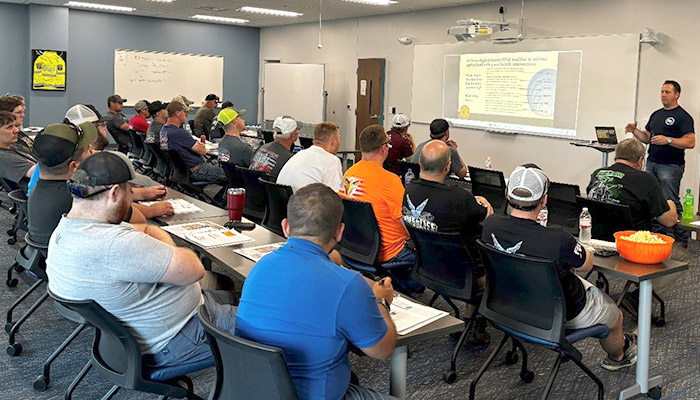
Tools
Farm MAPPER is an interactive web tool that allows first responders or farmers to identify hazards on farms — such as chemicals, flammable agents, or bulls — and map where they're located, along with the locations of electrical shutoffs, different buildings, and possible staging or airlift areas. It is recommended that first responders visit the farm to help farmers map out hazards and resources on their operations.
In the event of an emergency, first responders can access the farms they've mapped and their associated information on a mobile device before they reach the farm. The information is password-protected and only accessible by first responders, so farmers can feel better about sharing information about their farm on this website. Farm maps can also be printed out to provide first responders with hard copies.
Safer Farm offers farmers and first responders a way to rate the safety of different parts of farms, such as electrical wiring or roll bars. The scale of 1 to 5 helps the users determine if something is unsafe and should be addressed right away or in the near future. Printable versions of the inspection forms are also available.
Resources
The RF-DASH website is the web-based hub of the RF-DASH program. The website includes listings of news and events related to RF-DASH, links to quarterly digital newsletters, and downloadable training and promotional materials. All materials used during RF-DASH trainings are freely available on the website and can be used by individuals or institutions that have previously completed the RF-DASH train-the-trainer course and are now interested in conducting a training of their own.
Additionally, an RF-DASH training manual is currently in development.
Outreach Materials
The RF-DASH team developed several emergency preparedness and outreach materials that fire departments can disseminate to farms in their area in order to raise awareness and build relationships with the agricultural community. These materials include:
- Farm/Ranch Emergency Information Sheet (English and Spanish versions available)
- Tips for Calling 911 on Farms & Ranches (English and Spanish versions available)
- Manure Gas Warning Sticker
- Manure Gas Fire Department Sticker
These materials can also be ordered by farmers and others. If you are interested in ordering or learning more about these materials, please contact the RF-DASH team.
Results
More than 250 firefighters and emergency medical technicians (EMTs) from 17 states, 5 Canadian provinces, and the Navajo Nation have received training to become RF-DASH trainers. Additionally, many of these new trainers have gone on to disseminate the RF-DASH program to other first responders in their area. For example, within a year after their training, one group of 14 newly trained trainers had reached 341 individuals. Based on these results, it is estimated that RF-DASH has been disseminated to well over 5,000 individuals.
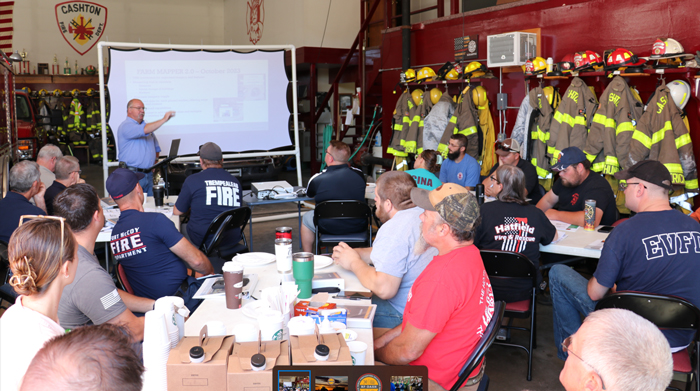
The feedback received by trainees has been very positive. Below are results from 121 training evaluation surveys completed by participants at 2023-2025 trainings:
- 86% of participants indicated that their understanding was more than moderately improved as a result of the RF-DASH training
- 92% indicated that their ability to assess agricultural hazards is more than moderately improved as a result of the RF-DASH training
- 97% indicated that after the RF-DASH training they felt at least moderately prepared for responding to an agricultural incident
All modules were generally rated as very useful for improving farm safety. Of those participants who had responded to an agricultural emergency in the last year, 94% stated that their training in RF-DASH would have improved their response to the incident. In addition, a comparison of pre- and post-training data indicates that participants felt that their ability to respond to a farm incident was highly improved by their involvement in the RF-DASH training course.
Challenges
There are several challenges with implementing the RF-DASH program. First, farms are private property, so first responders need to build trust with farmers and get their permission to visit their farm for pre-planning or hazard analysis or to complete trainings there. If a fire or EMS department has a farmer on staff, this person can be a good champion for the program and talk to other farmers.
Second, many rural fire departments are volunteer or part-time, making dissemination efforts a challenge. One solution is to have fire and EMS departments partner with local 4-H and FFA organizations to promote the program.
Third, many first responders are hesitant about reaching out to farmers in their area, limiting the farmer-firefighter connection that RF-DASH aims to facilitate. Currently, the project team is working with existing RF-DASH trainers to develop more effective outreach and implementation strategies.
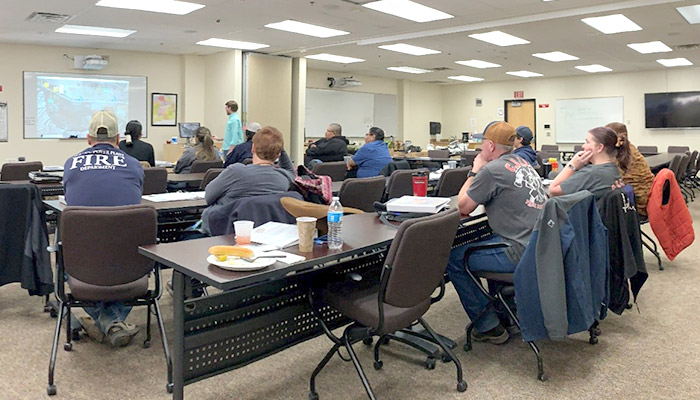
Replication
RF-DASH is a program intended for use by firefighters and EMS personnel, but anyone concerned about agricultural health and safety or agricultural injury prevention would likely find it beneficial, such as extension agents and county emergency managers. Recently, RF-DASH worked with NDSU Extension to hold trainings in North Dakota.
The first step to replicating RF-DASH in your area is to complete an RF-DASH training course. After completion of the training course, you will be well-prepared to train others in your community. All materials needed to conduct a training are available online free of charge, and an RF-DASH trainers map is also available.
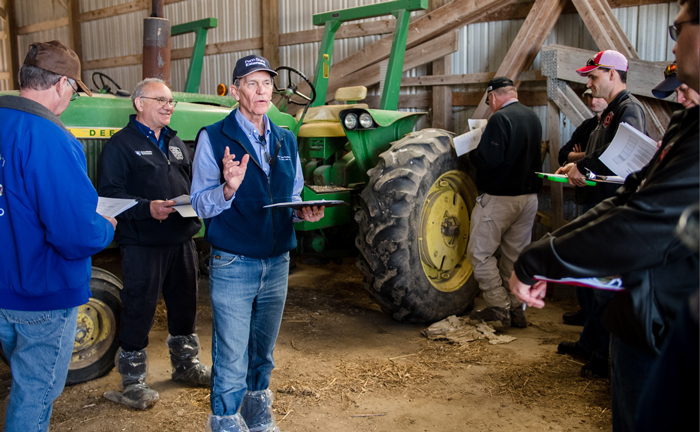
It's important to establish strong relations between farmers and first responders. The program provides a strong knowledge base, but involvement from the farming community is essential.
Contact Information
RF-DASH715.389.4141
rfdash@marshfieldresearch.org
Topics
Agricultural health and safety
· Emergency medical services
· Emergency medical technicians and paramedics
· Farmers and farmworkers
States served
National/Multi-State
Date added
October 6, 2023
Suggested citation: Rural Health Information Hub, 2025 . Rural Firefighters Delivering Agricultural Safety and Health (RF-DASH) [online]. Rural Health Information Hub. Available at: https://www.ruralhealthinfo.org/project-examples/1121 [Accessed 11 January 2026]
Please contact the models and innovations contact directly for the most complete and current information about this program. Summaries of models and innovations are provided by RHIhub for your convenience. The programs described are not endorsed by RHIhub or by the Federal Office of Rural Health Policy. Each rural community should consider whether a particular project or approach is a good match for their community’s needs and capacity. While it is sometimes possible to adapt program components to match your resources, keep in mind that changes to the program design may impact results.
